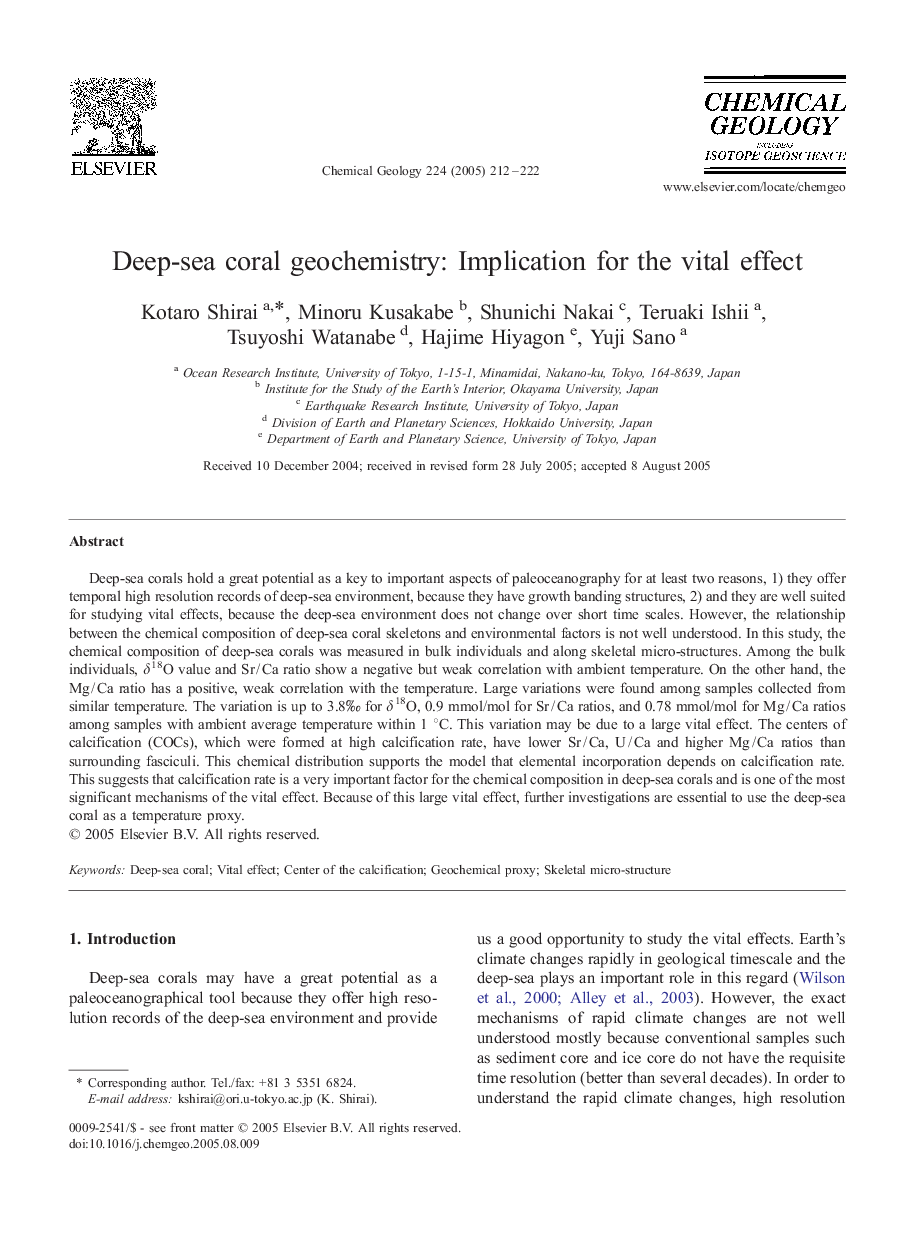| Article ID | Journal | Published Year | Pages | File Type |
|---|---|---|---|---|
| 9528999 | Chemical Geology | 2005 | 11 Pages |
Abstract
Deep-sea corals hold a great potential as a key to important aspects of paleoceanography for at least two reasons, 1) they offer temporal high resolution records of deep-sea environment, because they have growth banding structures, 2) and they are well suited for studying vital effects, because the deep-sea environment does not change over short time scales. However, the relationship between the chemical composition of deep-sea coral skeletons and environmental factors is not well understood. In this study, the chemical composition of deep-sea corals was measured in bulk individuals and along skeletal micro-structures. Among the bulk individuals, δ18O value and Sr / Ca ratio show a negative but weak correlation with ambient temperature. On the other hand, the Mg / Ca ratio has a positive, weak correlation with the temperature. Large variations were found among samples collected from similar temperature. The variation is up to 3.8Ⱐfor δ18O, 0.9 mmol/mol for Sr / Ca ratios, and 0.78 mmol/mol for Mg / Ca ratios among samples with ambient average temperature within 1 °C. This variation may be due to a large vital effect. The centers of calcification (COCs), which were formed at high calcification rate, have lower Sr / Ca, U / Ca and higher Mg / Ca ratios than surrounding fasciculi. This chemical distribution supports the model that elemental incorporation depends on calcification rate. This suggests that calcification rate is a very important factor for the chemical composition in deep-sea corals and is one of the most significant mechanisms of the vital effect. Because of this large vital effect, further investigations are essential to use the deep-sea coral as a temperature proxy.
Related Topics
Physical Sciences and Engineering
Earth and Planetary Sciences
Geochemistry and Petrology
Authors
Kotaro Shirai, Minoru Kusakabe, Shunichi Nakai, Teruaki Ishii, Tsuyoshi Watanabe, Hajime Hiyagon, Yuji Sano,
